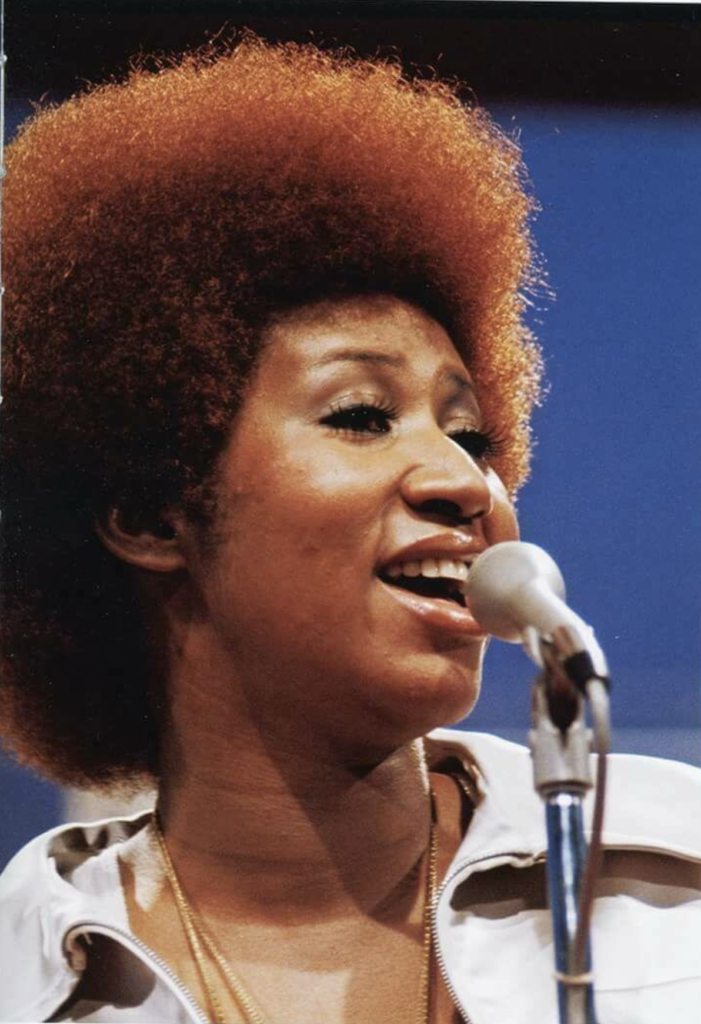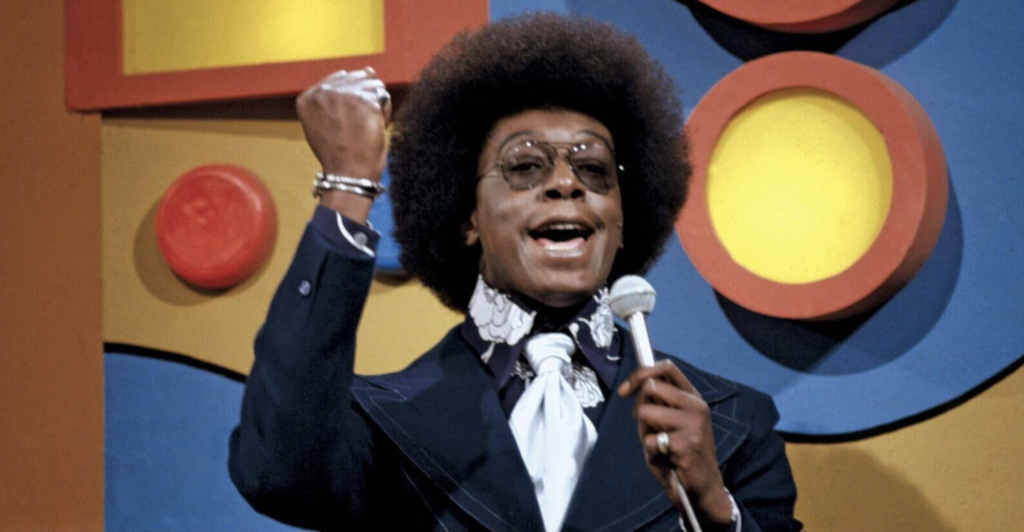The hippest trip in America. Sixty non-stop minutes across the tracks of your mind into the exciting world of soul.
The opening disco chords of the Soul Train theme song signaled more than just the start of a new show – for 35 years that melody (and all its subsequent remixes) called Black folks across America to a celebration. Ostensibly it was just a dance show, not unlike its predecessor American Bandstand. In reality, the differences between the two couldn’t have been more stark. While American Bandstand showcased the pop hits of the day, the show only occasionally gave non-white acts access to the performing stage and the audience of dancing teens was mysteriously void of Black people for years. Those absences were less mysterious and more intentional when considering the show was taped in Philadelphia. However, Soul Train transformed visions of Black life in America when it debuted nationally in 1971- it was a hip television program that showcased the hottest Black artists, the newest dance moves and more fashion than anyone could consume in sixty minutes. Unlike American Bandstand, we didn’t just get muted performances and stiff dance moves, we got it all. At a time when images of Black folks and Black life were riddled with stereotypes and often conformed to some manner of racist tropes, Soul Train gave us what most folks couldn’t articulate – the need for an affinity space for Black expression and joy.
When Gladys Knight & The Pips appeared on Soul Train during its first year, they blessed the stage with their musical gifts and left a bit of wisdom for us all embedded in the song “Friendship Train.”

This train stands for justice.
This train stands for freedom
This train stands for harmony and peace
This train stands for love
Come on, get on the friendship train
The show was an overnight success and quickly became an indispensable platform for all types of Black creatives. Wearing a silk pantsuit and donning an Afro reminiscent of a sunset sky, Aretha Franklin sang “Rock Steady” and firmly cemented her status as The Lady of Soul. In a velvet suit with a fresh press-n-curl, Barry White graced the stage backed by a 40-person orchestra. The Godfather of Soul, James Brown, joined dancers on the floor with his sweat-slicked chest bursting out of his bedazzled purple jumpsuit. The Sugarhill Gang, Kurtis Blow, and Run-DMC brought hip hop to the Soul Train stage garnering national exposure. Even Beyoncé, pre-hive, paid her dues on the show with Destiny’s Child. You had to be there.
Folks tuned in to see the performances and what its host, Don Cornelius, was wearing (let’s collectively skip over Shemar Moore and his aggressive hip thrusting, shall we), but the undisputed highlight of the show was the Soul Train Line. This was each dancer’s moment to shine in a room full of coordinated duos and choreographed dance moves. It was magic. Even folks who never watched a single episode knew about the Line – it might have been new to the television stage, but there was nothing new about it. The Line was a variant of the 1950s fad known as The Stroll, but its history extends back even further with roots in the American South, continental Africa and the Caribbean. The Soul Train line was a site of intentional joy, liberation and tradition – a sacred formation made with bodies carving out a slice of escape from the social and political stressors of living as Black folks in America.
“The Soul Train line was a site of intentional joy, liberation and tradition – a sacred formation made with bodies carving out a slice of escape from the social and political stressors of living as Black folks in America.”
The Soul Train Line was not simply a magical moment trapped in a television studio; it leaped into living rooms, backyards, block parties and family reunions. Wherever there is music and there are Black folks, there will be dancing. It’s almost a rule. Scratch that – it is definitely a rule. We love a good communal dancing moment. What makes the Soul Train Line unique is its egalitarian nature. Back when folks were Lindy Hopping and doing the Hustle, the goal was to work your way to the center of the crowd and outdance the other couples (or so we assume, we weren’t actually there). Folks would break dance anywhere they could fit a boombox and some cardboard, but there too the goal is to jump in the circle and go for what you know. Folks might hype you from the perimeter if you do something particularly dope, but it was kind of like double dutch – jump in at your own risk and be prepared to catch heat if you mess up. Down the Soul Train Line everybody gets a turn, everybody gets the claps and anybody can be a star.
“Down the Soul Train Line everybody gets a turn, everybody gets the claps and anybody can be a star.”

The Line is both an individual and communal experience all at once. How you choose to go down the Line is up to you – you can roll solo or coordinate outfits and moves with a partner. You can hit ‘em with the shoulders or give your knees, thighs and glutes a workout. Your granddaddy can slowly twirl your grandma down and your parents can test the limits of their muscles and your second-hand embarrassment. Your little cousins can show off dances fresh from Tik-Tok. And when adults usher the littlest ones down the Line, it becomes a protective place where the community nurtures creative expression with love and applause. It’s as close as you can get to a judgment-free space.
“In conditions that otherwise produce suffering and command silence, joy and laughter are revolutionary ideals.”
In conditions that otherwise produce suffering and command silence, joy and laughter are revolutionary ideals. The celebration of Black life in the wake of ever present death and in spite of organized terror is the preoccupation of we who believe in hope and love. Soul Train was an example of Black placemaking and cultural innovation, a lesson in how Black folks collectively reimagine and create what we need (even if what we need is entertainment) despite systemic barriers. It is evidence that family ain’t just about blood. Before Black joy had yet to root itself as an official movement, the Soul Train Line gave us an additional affinity space which we could all claim, free of charge. We might not have the snazzy outfits or the dazzling skills, but we could all turn on some music, form two lines and dance. There is an invaluable pride to be found in Black folks’ ability to lay claim to something so simple – a sense of peace and ownership found in efforts to reclaim our bodies. If the Soul Train Line came with an affirmation, perhaps it would be, “I am, and that is more than enough.” Take a lesson from the Line – throw your whole self into whatever it is you wanna do. Own it like you have your own personal hype crew, like your people have been and will always be beside you. And if things don’t go as planned, know that the beat goes on and so will you.
So will we.
(Black) people all over the world. It’s time to get down.

